أدوات قطع كربيد التنغستن معروفة بقوتها، صلابة, and long life. These tools can handle tough jobs and keep working under high heat and pressure.
But even the strongest tools need proper care—especially when they’re not in use. Improper storage can lead to rust, damage, chipping, or loss of performance over time.
In this guide, we’ll show you the best ways to store tungsten carbide cutting tools safely and effectively.
Whether you manage a CNC shop, a tool room, or a large manufacturing facility, these simple storage tips can save you money, reduce downtime, and help your tools last longer.
Why Proper Storage Matters
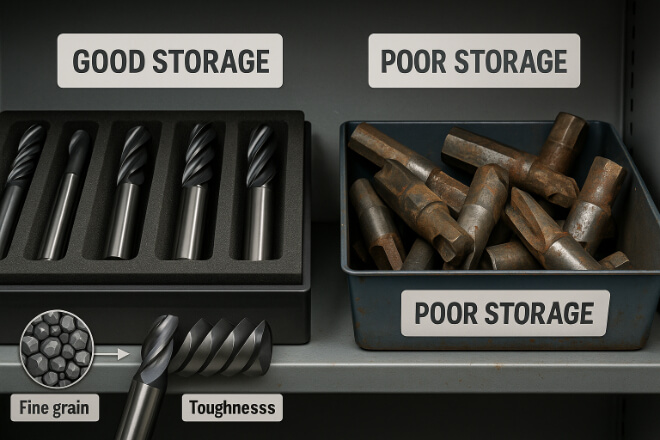
Storing tungsten carbide tools correctly is not just about keeping them neat. It’s about protecting your investment. Here’s why proper storage is so important:
Avoids edge damage: Carbide is hard but brittle. If tools knock against each other, cutting edges can chip.
Prevents corrosion: Though carbide is corrosion-resistant, cobalt binders can rust if exposed to moisture.
Keeps tools ready: Clean, well-organized tools are easy to find, inspect, and use.
Extends shelf life: Stored in the right conditions, carbide tools can last for years without losing quality.
Ignoring storage may result in costly replacements and tool failure during production.
Store in a Dry, Climate-Controlled Environment
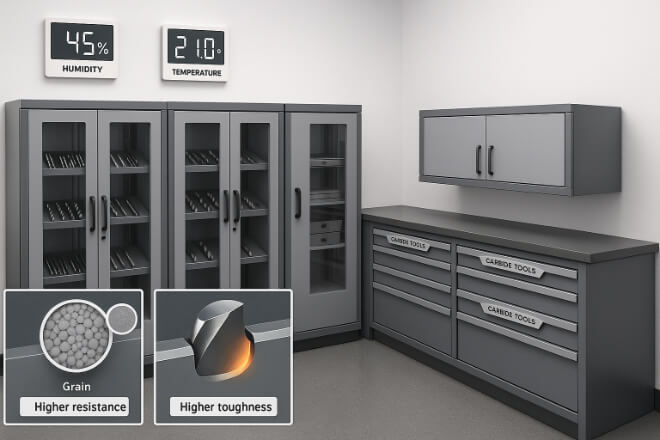
Moisture is the enemy of all metal tools—even carbide ones. High humidity or damp air can lead to rust, especially on the shank or areas containing cobalt.
That’s why storage areas must be dry and temperature-stable.
نصائح:
Keep the tool room at a constant temperature (around 20–22°C or 68–72°F).
Maintain relative humidity below 50%.
Use dehumidifiers in humid regions.
Avoid storing tools near doors or windows where condensation forms.
Storing tools in sealed drawers or cabinets can also reduce exposure to air moisture.
Use Proper Tool Racks or Holders
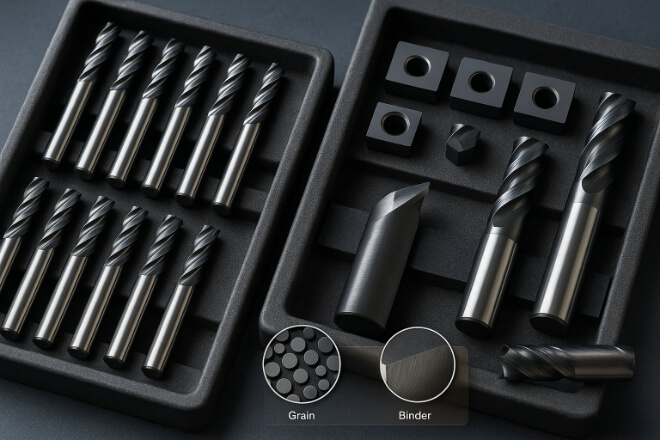
One of the biggest causes of tool damage during storage is physical contact. When tools touch each other, they can get scratched or chipped.
This is especially true for drills, مطاحن نهاية, or inserts with fine cutting edges.
أفضل الممارسات:
Use foam-lined trays or racks with individual slots.
Choose vertical racks for drill bits and reamers.
Store inserts in their original plastic cases when possible.
Do not pile tools on top of each other in a bin.
When tools are stored securely, you reduce the chance of edge breakage and save time during setup.
Keep Tools Clean Before Storing
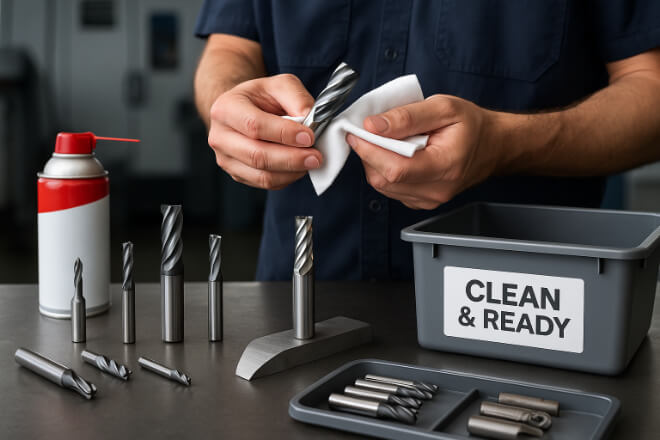
Storing a dirty tool is risky. Oil, coolant, metal chips, and dust can lead to corrosion or contamination over time.
Before storage:
Wipe down tools with a clean, lint-free cloth.
Remove any coolant or machining residue.
Apply a light protective oil if storing for long periods.
Use gloves to avoid transferring sweat or acids from your hands.
Clean tools stay in better condition and are safer to use when taken out again.
Label and Organize by Tool Type
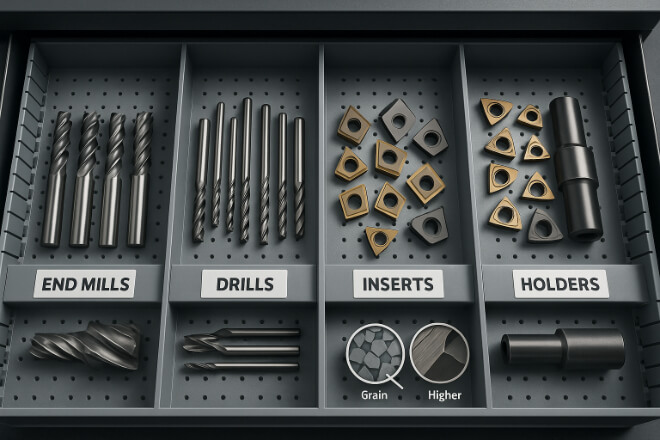
Organization improves productivity and safety. It also prevents misplacing valuable tools or using the wrong tool for the job.
نصائح:
Group tools by type (e.g., end mills, inserts, drills).
Sort by size or material type.
Label shelves, trays, or bins clearly.
Use QR codes or barcode systems for digital inventory tracking.
A well-organized storage system reduces search time and helps monitor tool usage or wear patterns over time.
Avoid Extreme Temperatures and UV Exposure

Though carbide is heat-resistant during cutting, extreme heat or cold during storage can still impact its performance—especially the coatings or brazed joints on some tools.
Also, UV light from direct sunlight may degrade plastic tool holders or coatings over time.
Storage tips:
Keep tools away from furnaces or air vents.
Avoid placing them near windows with direct sunlight.
Never store tools in vehicles or containers exposed to outdoor conditions.
Storing tools in a cool, dark, and stable area improves both their safety and appearance.
Use Anti-Rust and Moisture Protection for Long-Term Storage
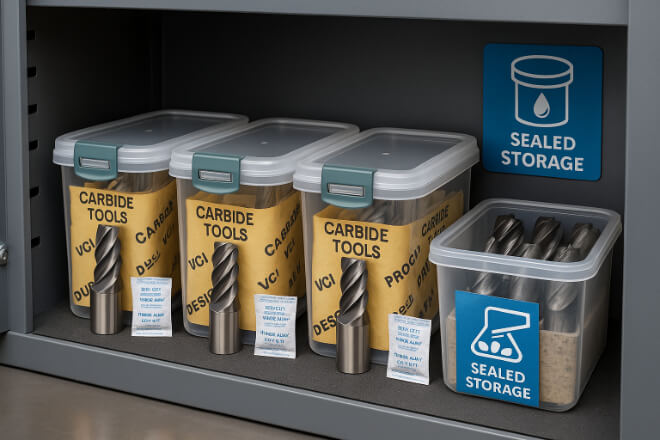
If your carbide tools will not be used for several months, extra precautions should be taken.
Long-term storage methods:
Wrap tools in VCI (vapor corrosion inhibitor) paper.
Store tools in airtight plastic bags with desiccant packs.
Apply rust-inhibiting oil or spray.
Use rust-blocking foam inserts in drawers or bins.
These low-cost steps help preserve tool condition, even over many months or years.
Protect Coated Tools from Abrasion
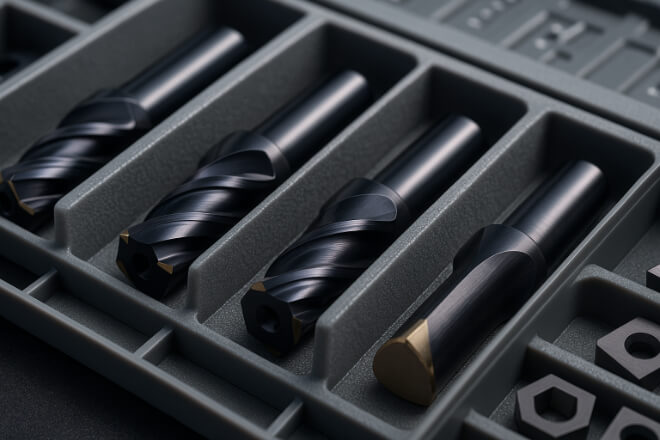
Modern carbide tools often come with special coatings—like TiAlN, TiCN, or diamond. These coatings are thin but critical. If scratched, they lose effectiveness.
Storage tips for coated tools:
Avoid touching cutting edges with fingers or metal surfaces.
Use non-abrasive holders or foam trays.
Don’t mix coated and uncoated tools in the same bin.
Separate tools after sharpening or recoating.
Keeping coatings intact extends tool life and ensures performance in high-speed machining.
Store Regrindable and Used Tools Separately
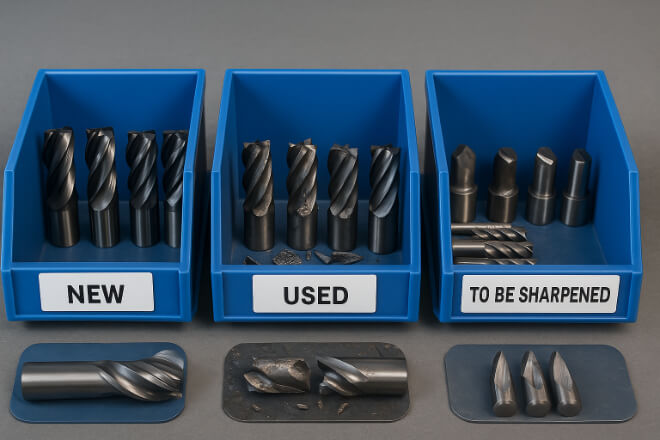
Don’t mix used tools with new ones. This increases the risk of using a dull tool by mistake or regrinding the wrong tool.
Good practices:
Use separate drawers or bins marked “Used,” “To Be Sharpened,” or “Scrap.”
Record the number of regrind cycles per tool.
Recoat tools only if they are still within tolerance.
Proper separation helps control quality and makes tool tracking easier.
Maintain a Digital Inventory System
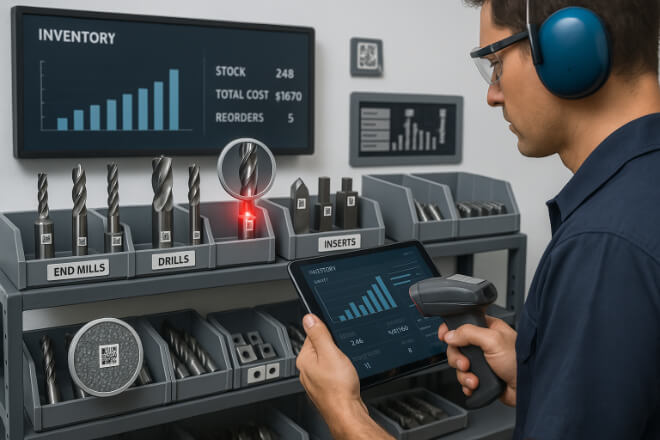
Manual tracking of tools often leads to errors, missing tools, or over-ordering. A simple digital system can improve storage management.
Suggested features:
Tool ID numbers linked to a database
QR/barcode scanning for check-in/check-out
Maintenance records (regrind, recoating, etc.)
Location tracking by shelf or cabinet
Inventory systems help reduce waste, improve forecasting, and ensure better use of available stock.
Train Employees on Tool Handling and Storage
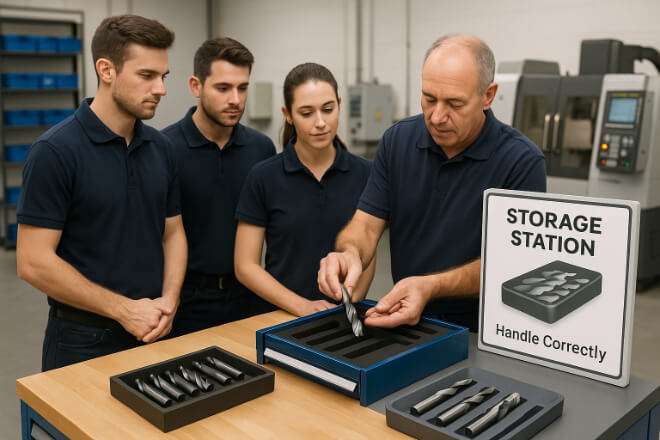
Your storage system is only as strong as the people using it. Make sure employees understand why tool care matters.
Training should include:
How to clean and inspect tools before storage
How to place tools into holders correctly
How to handle coated tools without causing damage
How to identify when a tool should not be returned to storage
Proper training builds good habits and reduces tool loss or misuse.
الأفكار النهائية
Tungsten carbide cutting tools are a big investment. But with proper storage, that investment can last longer and perform better.
Clean, dry, organized tools reduce downtime, boost productivity, and improve part quality.
By applying the storage tips above, your shop can avoid unnecessary tool damage and get the full value out of every tool.
Whether you run a small machine shop or a global production facility, protecting your carbide tools pays off.
Want tools built to last? Explore ريتوبز to find carbide solutions designed for durability and backed by expert support.
